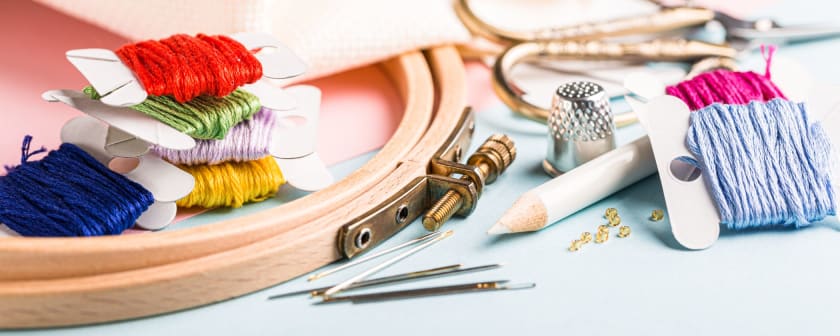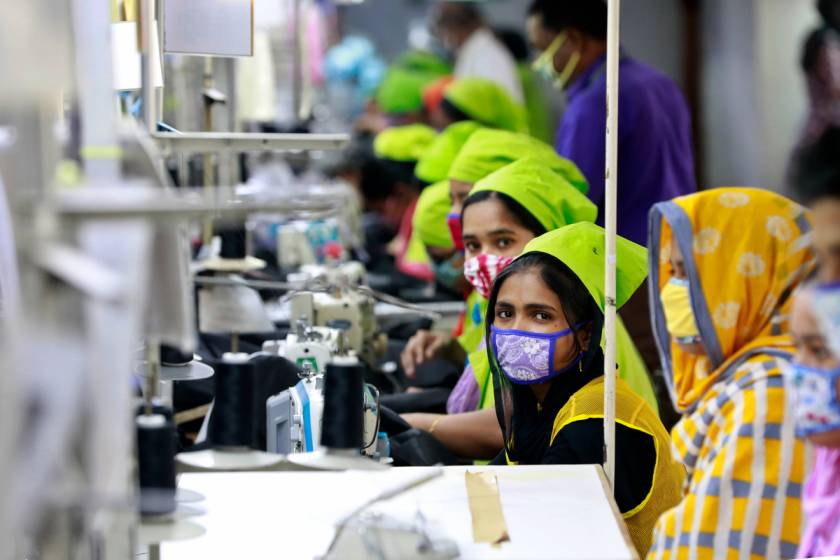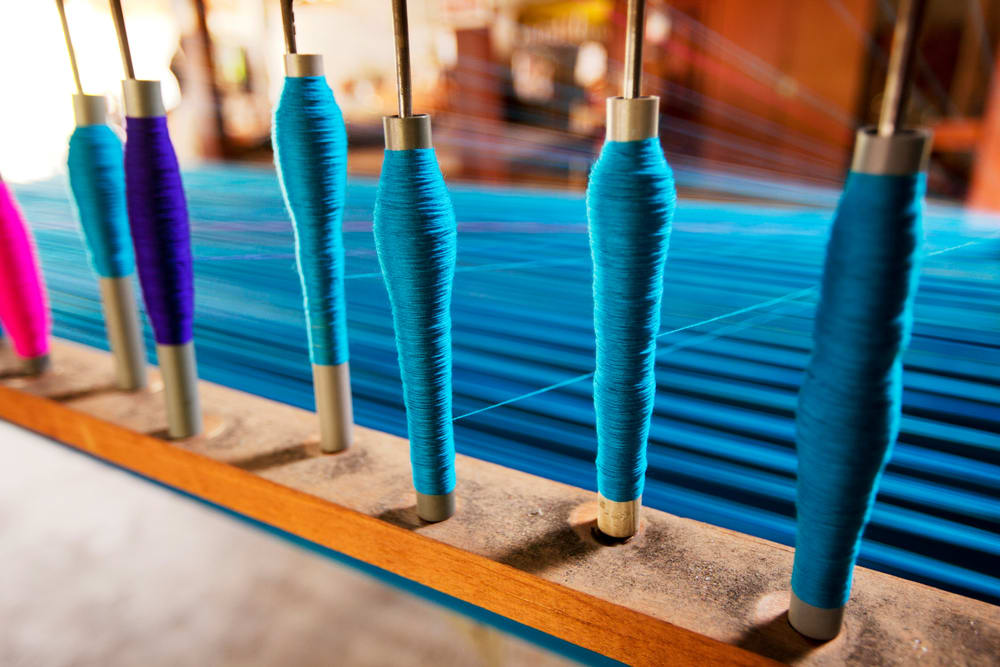Different Types of Stitching



Stitching is an art that is almost as old as mankind itself. Way back in Neanderthal days, when humans were evolving from primates to Homo sapiens and lived in caves, they made clothes out of the hides of the animals killed for food. In today's modern world, people depend on machine stitching a lot. However, everyone should know about some basic types of stitching.
Types of stitching with hand
1. Running stitch: This first stitch that anyone learns in the sewing class or their mother is the running stitch. This is done to mend a hem or stitch something torn quickly. The spacing is the most important aspect of running stitch. The thread normally is of the same color as that of the fabric. This stitch is not meant for embroidery.
2. Backstitch- Backstitch is a simple embroidery where the stitches are made in the backward direction. This stitch is perfect for carving out an outline or stitching letters on handkerchiefs or personal items like shirts, dresses, etc. Even two pieces of fabric can be stitched together with this kind of stitch. Stem stitch, split stitch, outline stitch, etc., are a few of the variants of this stitch.
3. Basting stitch- This type of stitching is similar to the running stitch. However, they are about a quarter of an inch apart from each other. These usually are temporary stitches that are sewn quickly but removed later once the dress is ready. Often tacking threads are weak and can be torn apart easily. This stitch is often used just to put the seam in place before the proper machine stitch is used to sew it properly or to transfer a pattern marking to a piece of apparel.
4. Blanket Stitch- This type of stitching helps finish the edges of thick clothes, blankets, rugs, or creating buttonholes. It reinforces the edges of thick materials and does not allow the threads to come off easily. This stitch is used in many patterns in sweaters to make them look beautiful. It is also known as cable stitch or crochet stitch as per the different styles used.
5. Blind stitch or invisible stitch- This type of stitching is mostly invisible and is used to fold the cloth so that the fibers coming off the edges can be hidden. This is normally used in the hem of a skirt or dress. Sometimes it is even used to join two pieces of fabric.
6. Buttonhole stitch- These types of stitches traditionally were used to reinforce the buttonholes so that the edges are not visible. It stops the fabric from raveling, and increases the garment's lifespan. It makes the buttonhole look neat too. This type of stitching is also used to make stems and other designs in crewel embroidery.
7. Chain Stitch- This type of temporary stitch often falls in the category of basting stitch. Either single thread or double thread can be used for chain stitch. Normally a series of looped stitches using the thread and needle is created, and when done neatly, this pattern of embroidery often looks amazing on the finished apparel.
8. Cross Stitch- This type of stitch is used on a typical cloth made for cross stitch embroidery. An X is formed, and various patterns are sewn using it. Often wool is used for creating cross-stitch embroidery, and cushion covers, table cloths, kaftans, quilts and many popular items are created using this type of stitch.
9. Catch Stitch- This is similar to the blanket stitch used to finish the garment's edge. It is also used to shorten the length of the garment, like the sleeves or the hemline, without cutting it off. It comes very handy for growing children as they will grow taller within a few years, and instead of buying new dresses, if the hems can be unfolded, it will serve the purpose.
10. Darning Stitch- This method is used to repair the holes and worn out areas using needles and thread. It uses the weaving technique to fill up the area neatly, which is not visible to the eyes of the onlookers like the heel of a pair of socks. Often adding an extra piece of cloth for such areas is not advisable as it will not be comfortable for the wearer.
11. Hem Stitch- Hemstitch or hem-stitch is not the simple way to fold your hems of the dress. It can be a popular hand-sewing technique for embellishing the hem, which can use the embroidery thread in contrasting color of that of the primary fabric. Often household linens like table cloth, covers for fridges and other appliances use this technique for stitching the hems.
12. Overcast Stitch- It is a simple stitch that is often used to prevent the unraveling of the fabric. It is used to close the unfinished edge or hemline and is often used as a temporary stitching medium.
13. Pad Stitch- Tailors use pad stitch on a jacket's lapel, under the collar, a dress's shoulders to give them additional firmness and ensure that they don't sag. Adding extra padding helps in maintaining the perfect curvature and shape.
These types of stitches are running stitches made by placing tiny stitches perpendicular to the stitching line. They are used to join two or more layers of fabric and are helpful to create a pad-like shape.
14. Pick Stitch or Stab Stitch- It is very similar to a running stitch; however, it uses much bigger shots to ensure only a few stitches show up on the right side of the garment. Often these are used in suits before the wearer does the trial before the final stitch is done. Since after the final stitch, altering the garment will leave needle holes, this stop-gap arrangement is made.
15. Tent Stitch- Basketweave tent stitch, continental tent stitch and half-cross tent stitch are some of the variants of this stitch. This slanted stitch is at 45 degrees and is often used to join two fabrics. This diagonal needlepoint stitch crosses over one horizontal (weft) and one vertical (warp) thread of needlepoint canvas.
Types of stitching with machine
1. Multi-needle Lockstitch and Chain Stitch- This type of stitching is used on Jeans and other sturdy materials to ensure that the sides do not come off. They are the most commonly used stitches in garment factories.
2. Zig Zag Stitch- Most sewing machines come with the zigzag stitch option, and this type of stitching keeps the seams from fraying. One may even use this type of stitch for making buttonholes.
3. Single Needle Lockstitch- This stitch is reversible and best used when making a jacket that can be worn both ways. One might have to change the under-thread bobbin several times before finishing the entire apparel. However, this produces tight and strong stitching for all kinds of clothes like trousers, jackets, and clothes to be worn in rough terrains.
4. Cover Seam- Twin needle cover seam is the most common version of this stitch. This type of stitch is created using two needle threads and one looper thread. This is a very useful type of machine stitch that is used extensively in the garment factories for hemming apparel made from knitted fabric, elastic, lace, crochet design attaching etc. It is even useful to attach lace and other delicate materials to lingerie and nightgowns.
5. Two Thread Overedge- Also known as welting, this type of single-ply serging is used for the hemming of the T-shirts. Hence it is one of the most popular machine stitches in the current times as T-shirts are the most common types of apparel across the globe.
6. Four Thread Safety Stitch- This type of stitch is used for creating dresses for acrobats, army professionals, and other occupations wherein the clothes have to undergo rough usage by the wearers. These stitches use very sturdy materials that can be locked using very sturdy stitches that will not come off even in very rough usage.
7. Overlock stitch- An overlock machine stitch sews over the edge of one or two pieces of cloth for edging, hemming, or seaming. Such sewing machines are known as sergers in North America as they cut the edges of the cloth inserted to create the overlock at the hemline.
8. Satin Stitch- This is used in embroidery to cover a flower, leaf or any other pattern. It is also known as a damask stitch and is very useful for creating beautiful embroidered patterns. Many artisans cover the borders with chain stitch or backstitch before filling in the fabric section with satin stitch.
Conclusion
While you master the art of stitching in your workshop, Fashinza can work as your trusted partner in sourcing the right materials for your fashion brand. Fashinza is known for ethical sourcing and takes care of the entire procurement cycle by getting the right materials from the right manufacturers/weavers at the best payment terms. They also manage the payments to the manufacturers/weavers so that you can focus on your core competence, designing. Happy Holidays!!!



















